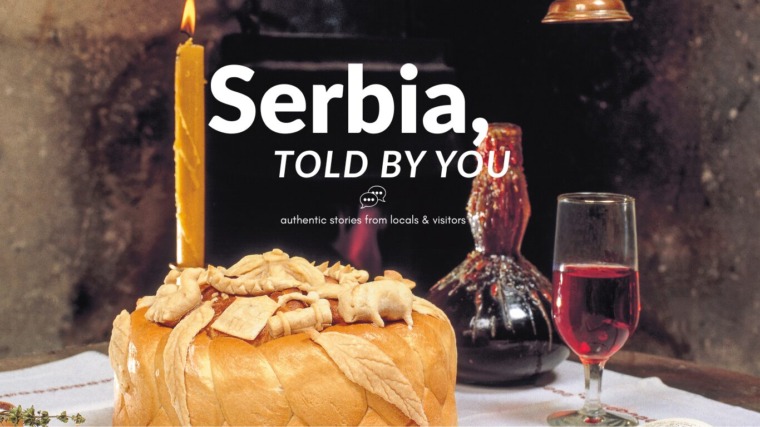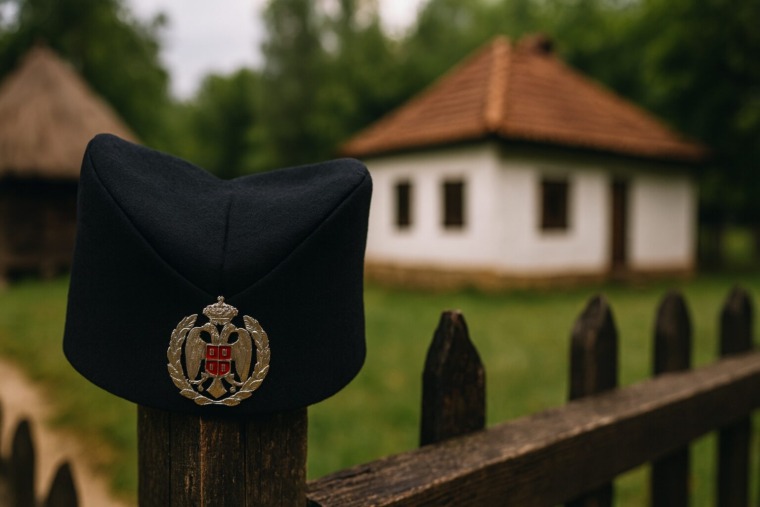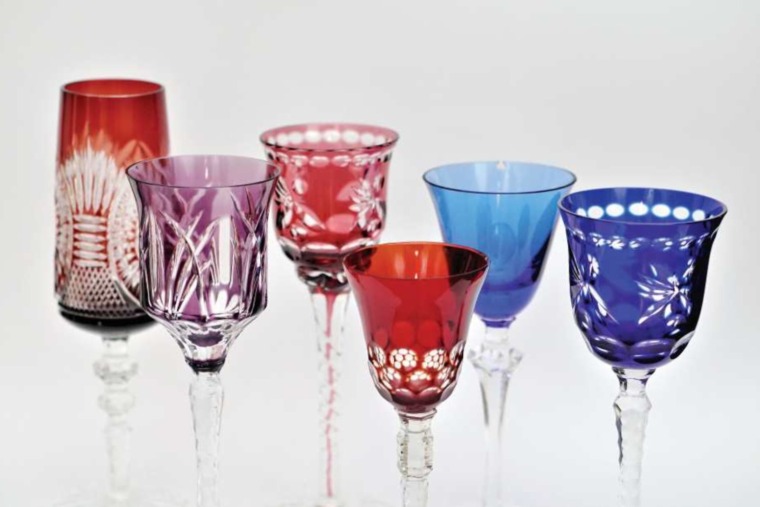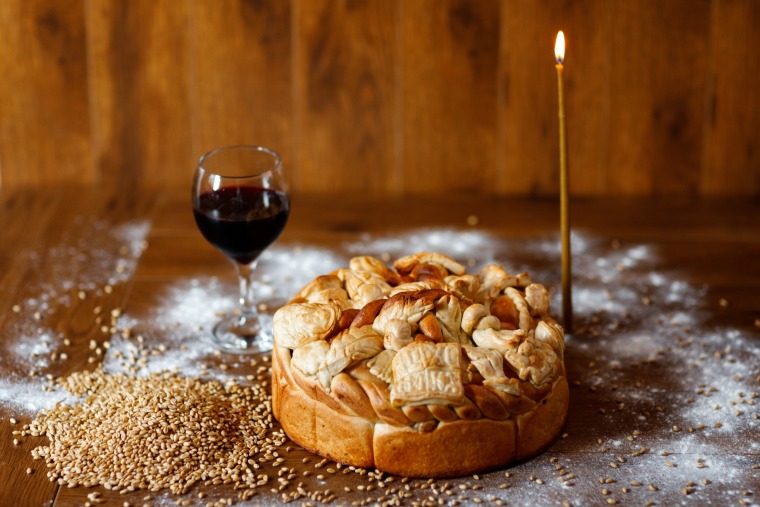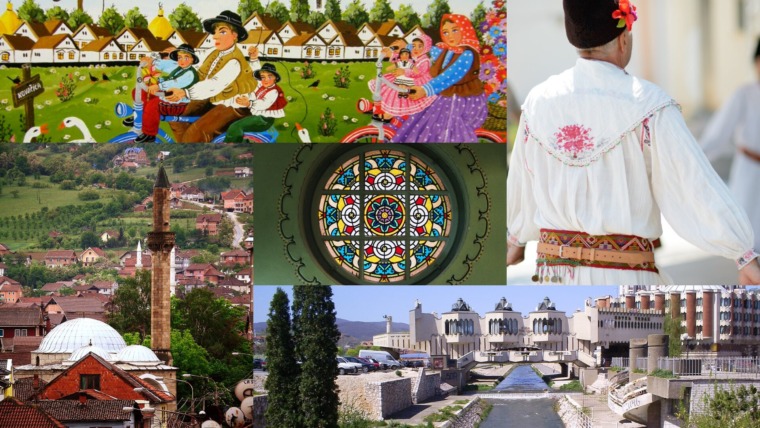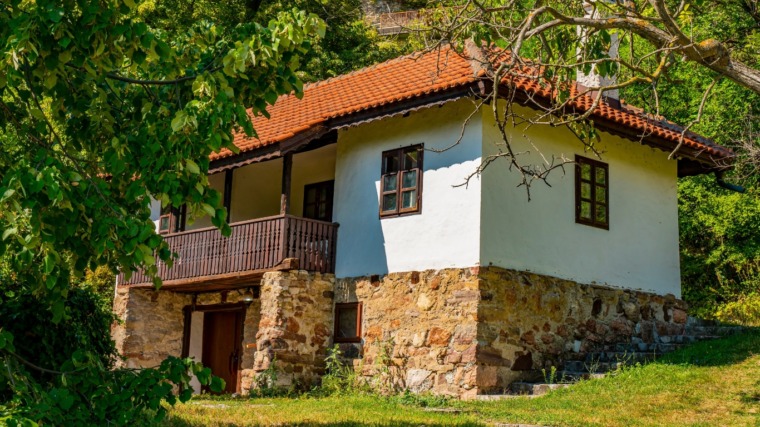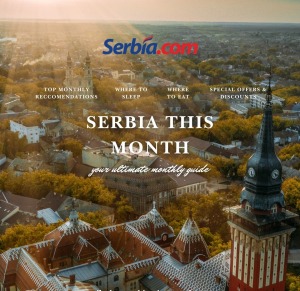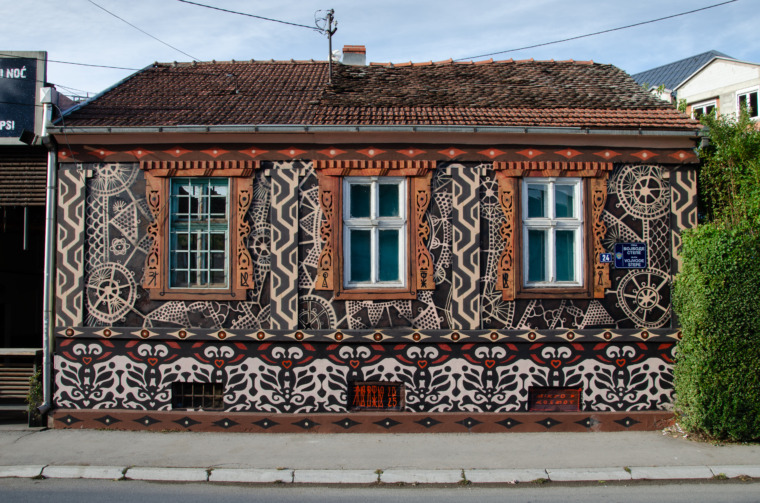
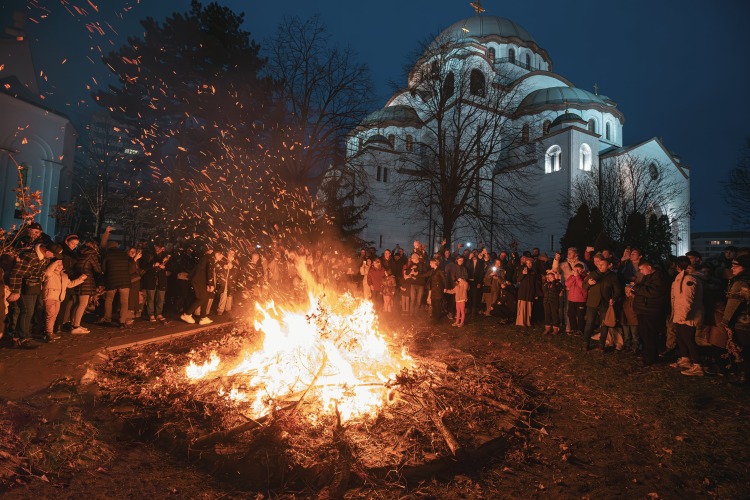
In Serbia, Christmas is celebrated with deep religious reverence, festive cheer, and an abundance of time-honored customs that have been passed down through generations. The days leading up to Christmas Day, especially Badnje Jutro (Christmas Eve morning), Badnji Dan (Christmas Eve), and Badnje Veče (Christmas Eve evening), are filled with spiritual significance, family gatherings, and ritualistic practices that give this holiday a unique and heartfelt spirit.
The Serbian Orthodox Church follows the Julian calendar, which means Christmas is celebrated on January 7th, making the night of January 6th a night of anticipation, prayer, and festivity. Here’s an in-depth look at how Serbs celebrate these sacred days and the important customs that enrich the Christmas spirit.
Badnje Jutro (Christmas Eve Morning): Preparing for the Festivities
Badnje Jutro, or Christmas Eve morning, marks the beginning of the final day of Advent and is traditionally a day of fasting and prayer. It is considered a day of spiritual preparation for the sacred holiday that follows.
The Fast and the Blessings:
In Serbia, Orthodox Christians observe a strict fast on Christmas Eve, abstaining from meat and dairy products. Many will not eat until the evening meal. The focus is on prayer, reflection, and the spiritual preparation to receive the birth of Christ.
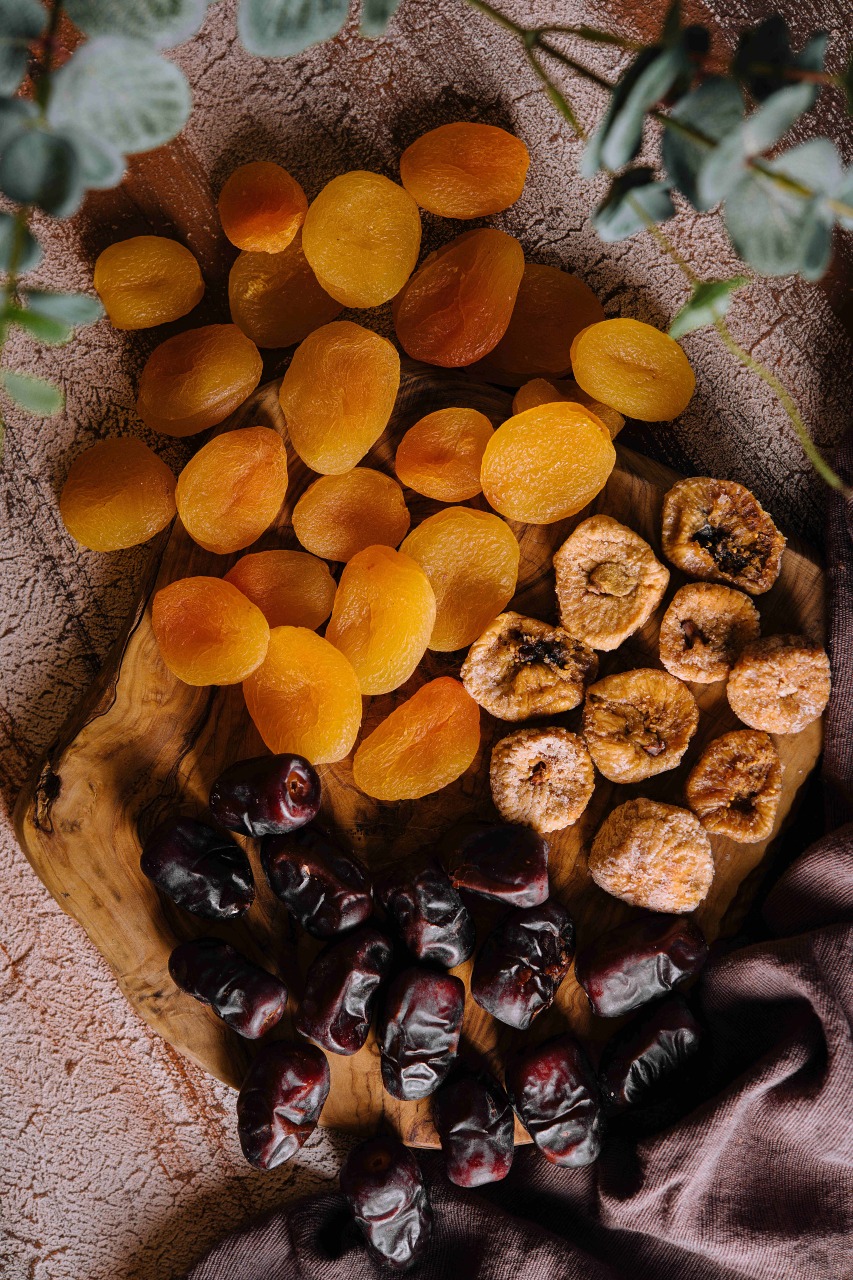
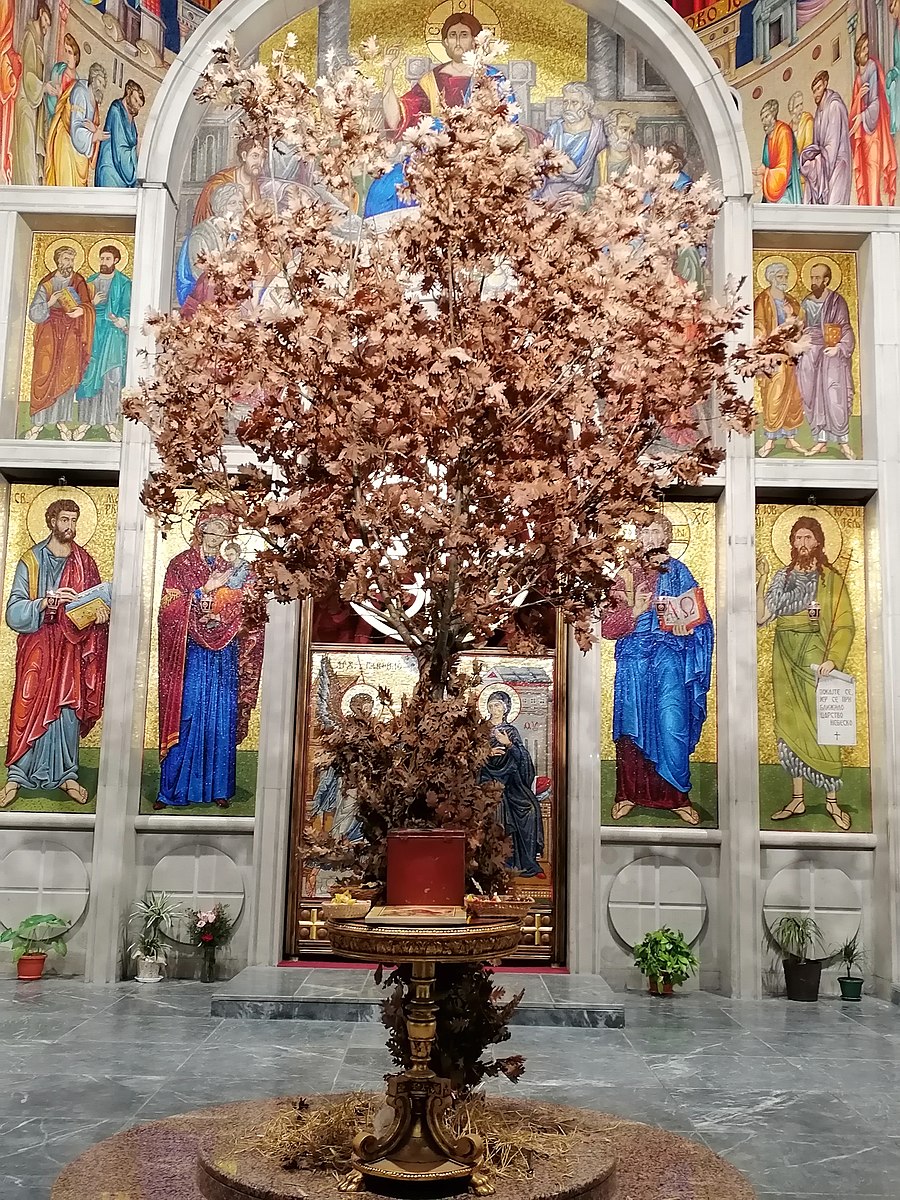
A central ritual that takes place on Badnje Jutro is the blessing of the Badnjak, an oak or pine branch or log, which symbolizes the arrival of Christ. This is the first step in the Christmas Eve rituals. The log is often brought home by the head of the household or family members, and it carries a deep symbolism connected to the birth of Christ.
Badnjak’s Symbolism:
The Badnjak (oak tree or sometimes fir) represents the tree that was used to warm the manger in Bethlehem. It is also seen as a symbol of life, rebirth, and the spirit of Christmas. The head of the family often cuts the Badnjak in the forest, bringing it back to the home, where it will be used in the evening ceremonies.
Many Serbs will also visit their local church on Badnje Jutro for a special morning liturgy. Here, they will receive blessings for health and prosperity in the coming year.
Badnji Dan (Christmas Eve): The Heart of Serbian Christmas Traditions
Badnji Dan, or Christmas Eve, is one of the most important days of the year in Serbia. It is a time for family gatherings, intense preparation, and a mix of joyful celebration and religious reverence. The day is marked by several rituals that underscore the deep religious and cultural significance of the holiday.
The Bringing of the Badnjak:
The Badnjak, which was brought home on Badnje Jutro, is now prepared for the evening rituals. This log is typically placed on the family’s fireplace or hearth, symbolizing warmth, unity, and the spirit of Christ’s birth. Often, the log is decorated with small branches and adorned with symbols of faith and hope.
Serbian Christmas Eve Meal:
Since the day is one of fasting, Serbs will prepare a meatless meal for Badnji Dan. The table will feature a variety of traditional dishes such as beans, potato salad, mushrooms, pickles, and fish. A key dish is “česnica”, a special bread made for Christmas Eve, which contains a coin or a small item hidden inside. The person who finds the coin is believed to have good luck in the coming year.
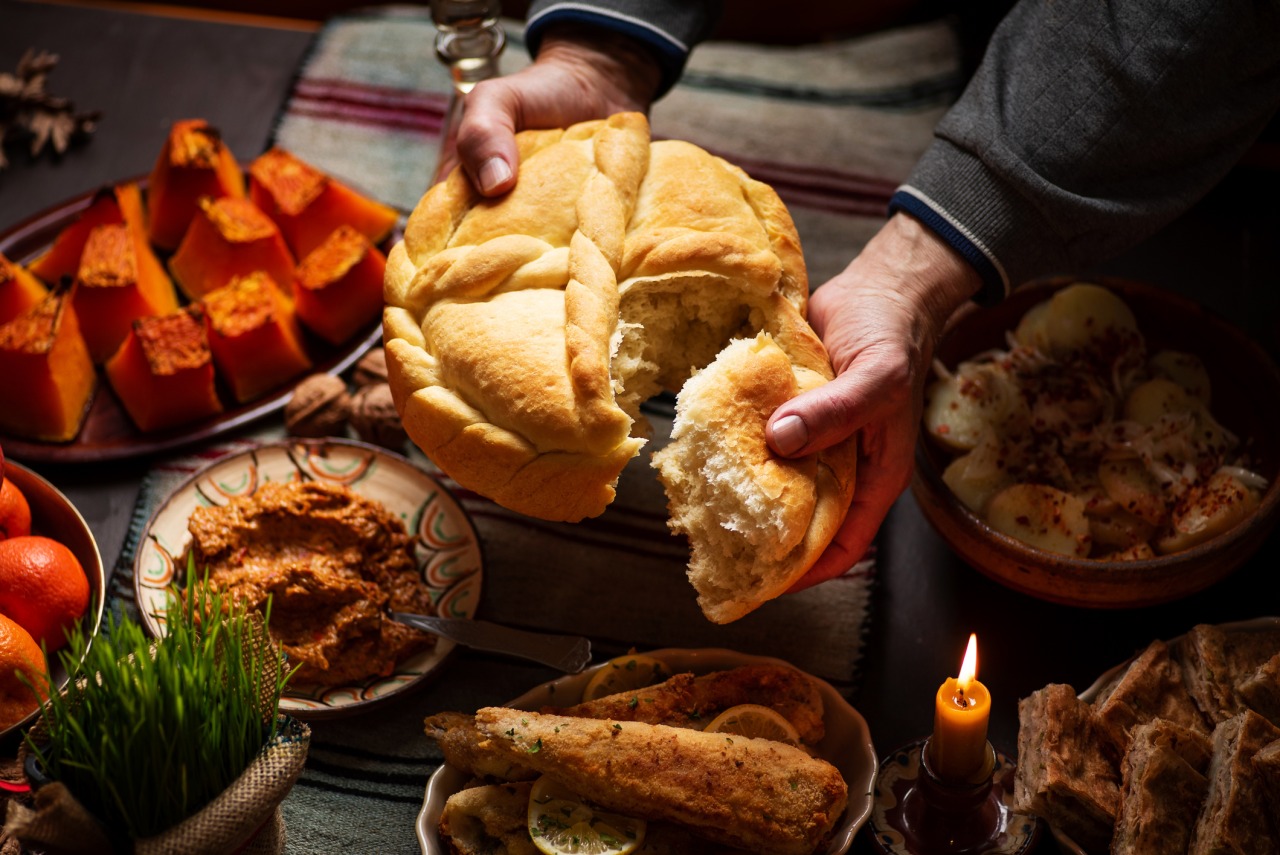
The Blessing of the Home and Family:
On Badnji Dan, families also observe the ritual of blessing the house with holy water. A priest or the head of the family will walk through the house, sprinkling holy water in every room while invoking blessings for health, prosperity, and peace. The goal is to cleanse the home spiritually, ensuring it is ready to welcome Christ.
The Burning of the Badnjak:
As night falls, the Badnjak is set alight. This fire symbolizes the warmth and light of Christ’s birth. It is customary for the fire to burn throughout the night, and families will gather around it to pray, sing Christmas carols (“kolende“), and share stories.
Badnje Veče (Christmas Eve Evening): The Sacred Night
Badnje Veče, or Christmas Eve evening, is the highlight of the Christmas celebration in Serbia. The evening marks the transition from fasting to feasting, as well as the sacred moment when families gather to await the birth of Christ.
The Midnight Mass:
On Badnje Veče, Serbs attend the midnight liturgy or Christmas Eve Mass at the local church. This service is deeply symbolic, representing the arrival of Christ, the Light of the World. The Christmas Eve Divine Liturgy is filled with hymns, chants, and prayers, often lasting several hours. The service culminates in the Blessing of the Nativity, and it is at this moment that families return home to begin their own celebration.
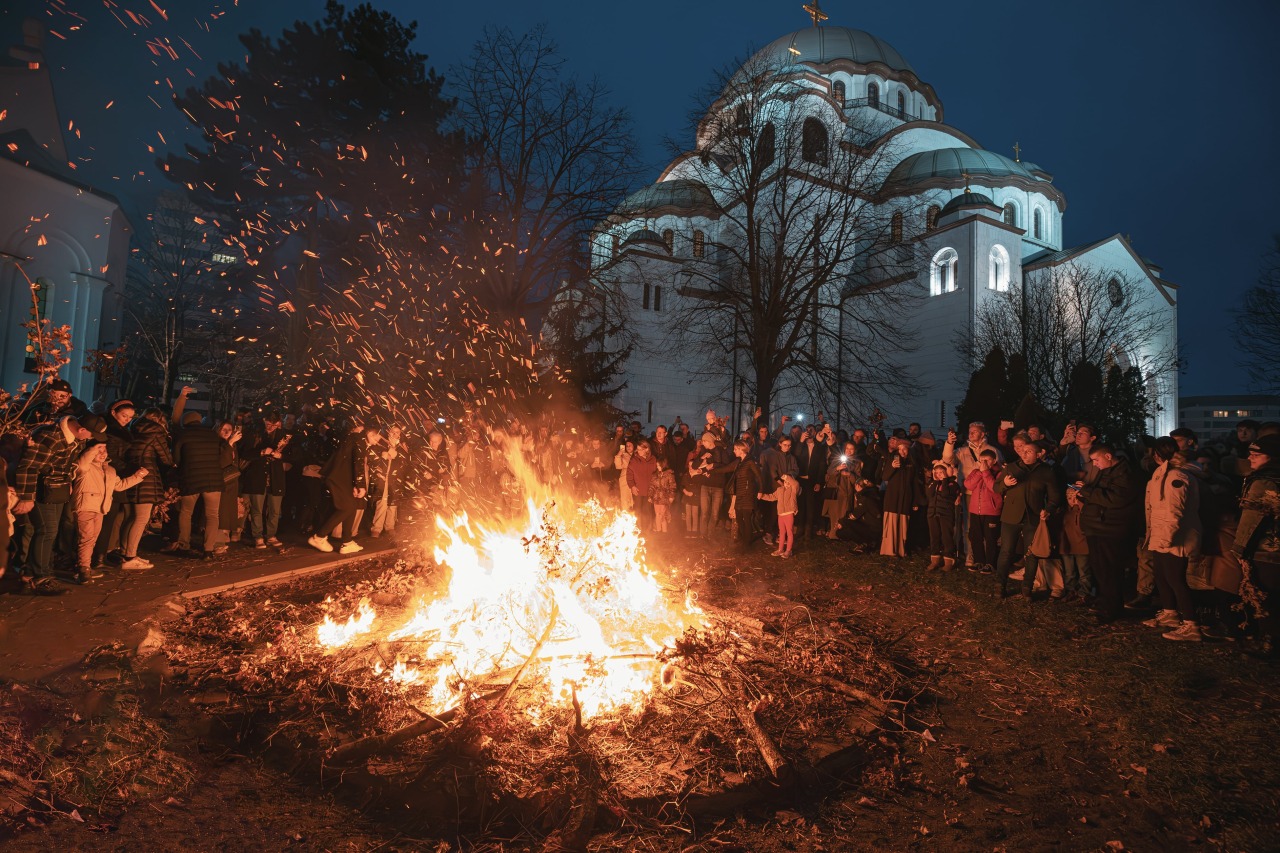
The Christmas Eve Feast:
After the midnight liturgy, families return home to enjoy their Christmas Eve meal. The meal typically consists of a variety of vegetarian dishes, such as sarma (stuffed cabbage rolls with rice and vegetables), ajvar (a roasted red pepper spread), and pita (a savory pastry filled with cheese, potatoes, or apples).
The centerpiece of the Christmas Eve dinner is the “česnica”, the traditional Christmas bread. Before breaking the bread, the head of the family will divide it into portions for everyone present, ensuring that each member of the household gets a piece. The person who finds the hidden coin is said to be blessed with good fortune in the coming year.
The Ritual of Yule Log and the First Christmas Day:
On Badnje Veče, the Badnjak is placed in the hearth, where it is ceremonially burned. This symbolizes the warmth, light, and joy brought by the birth of Christ. Family members will gather to exchange well-wishes, share gifts, and sing Christmas carols, known as kolende, which are often performed by children. The songs are filled with blessings for health, happiness, and prosperity.
A Day of Unity, Faith, and Family
For Serbs, Badnje Jutro, Badnji Dan, and Badnje Veče are more than just the days leading up to Christmas—they are sacred moments filled with prayer, reflection, tradition, and the promise of renewal. These celebrations are centered around family unity, faith, and spiritual warmth. The symbolism of the Badnjak, the lighting of the fire, and the sharing of meals brings a sense of togetherness that transcends mere celebration, offering a deeper connection to the values of love, hope, and gratitude.
In a world where traditions are often lost or forgotten, Serbia’s Christmas Eve customs continue to be a vibrant and cherished part of the nation’s cultural and religious identity. Whether it’s the warmth of the family hearth, the smell of traditional Christmas dishes, or the light of the Badnjak fire, these celebrations offer a glimpse into the soul of Serbian Christmas and a reflection of the enduring spirit of faith, tradition, and community.
Related Articles

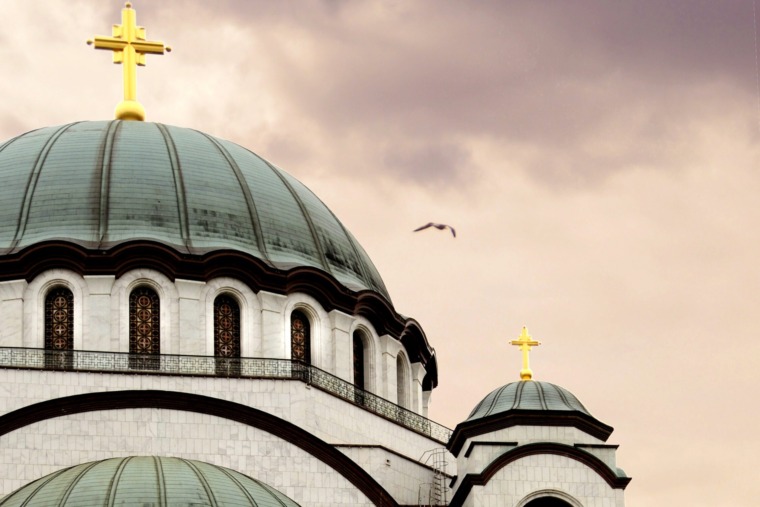
Belgrade: From Filming Location to Film Capital in the Making
December 18, 2025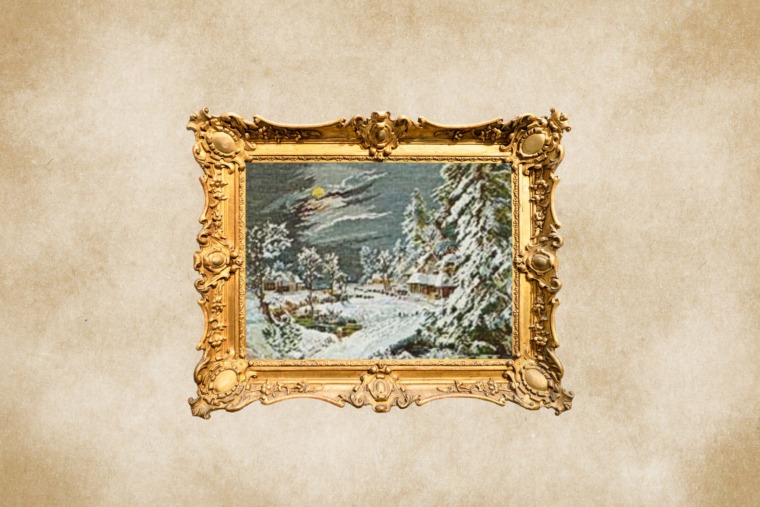
Stitched with Love: The Story of Serbian Gobelins
November 4, 2025